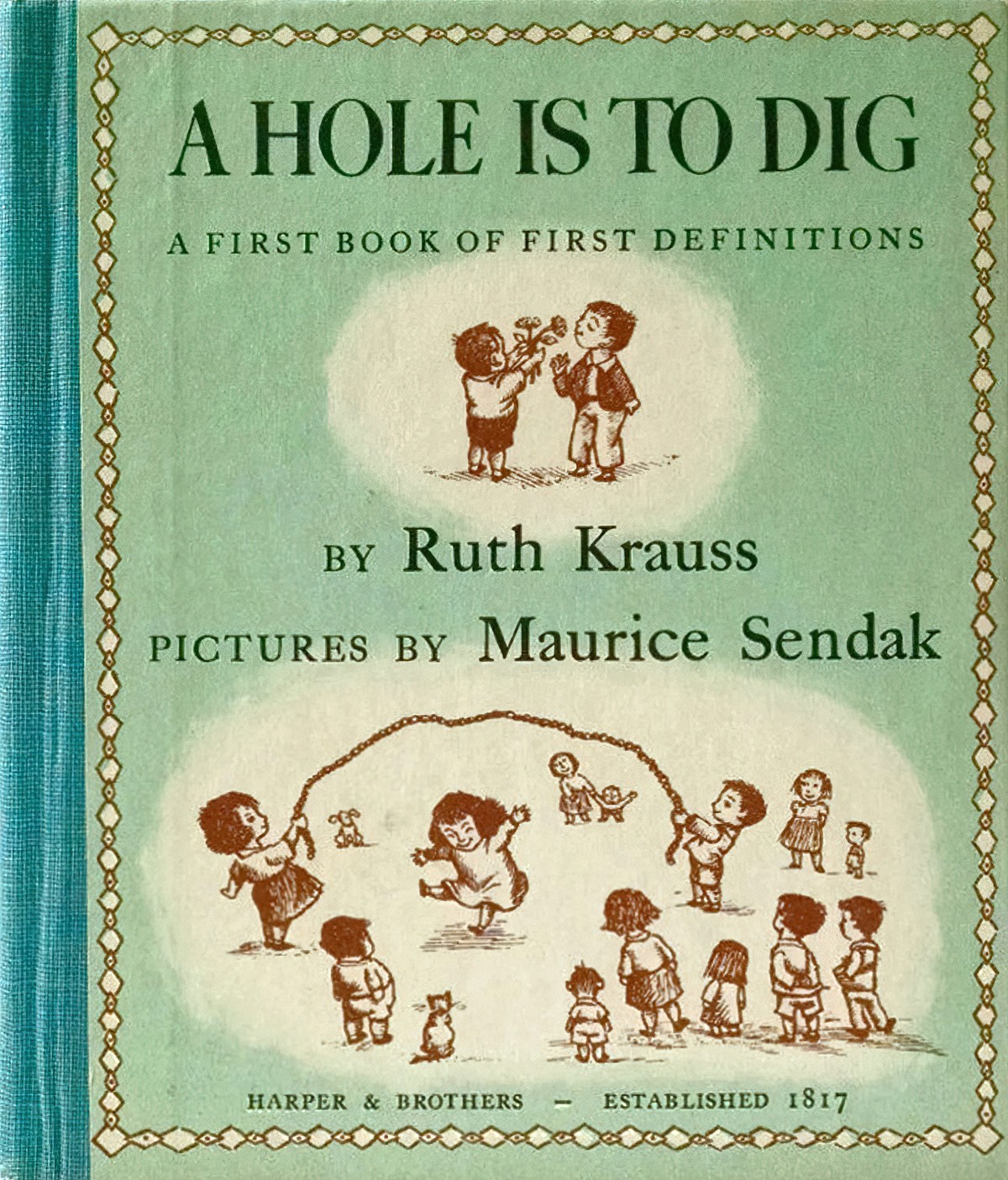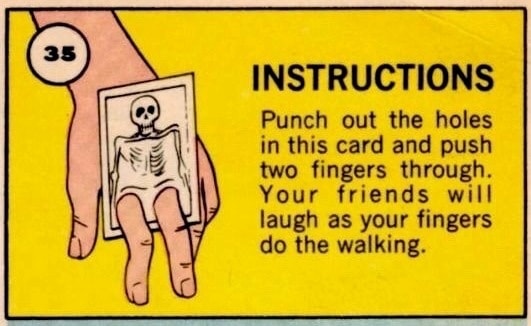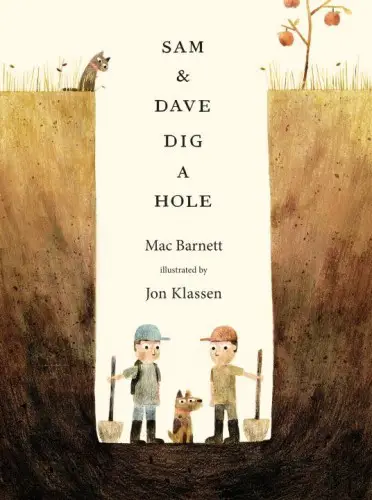Earlier this month I wrote a post on Teaching Kids How To Structure A Story. Mac Barnett and Jon Klassen’s Sam and Dave Dig A Hole is useful as mentor text because it appears at first glance to break all the rules. This story does follow the rules of storytelling, but in an ironic way.
Jon Klassen is a favourite picture book illustrator in this house. In Sam and Dave Dig A Hole Klassen is paired with Mac Barnett, who wrote the text. I’ve previously delved into the structure of This Is Not My Hat, I Want My Hat Back and The Dark, with text written by Daniel Handler.
STORY STRUCTURE OF SAM AND DAVE DIG A HOLE
WHO IS THE MAIN CHARACTER?
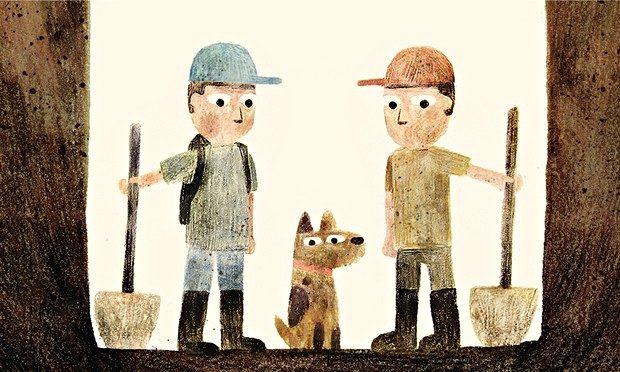
Sometimes stories star a cast of characters and they are all main characters. Not many stories do this, but Sam and Dave Dig A Hole happens to be one example. Sam and Dave are in the title, but the dog is also part of this cast. The dog stars equally, even though he or she doesn’t say anything.

Now we’ve identified the characters, what is their big shortcoming? What are they not very good at? In a cast of characters, everyone probably has a different shortcoming.
Sam and Dave happen to be very similar. They are basically the same person in duplicate, and we can consider them in this way. Sam+Dave contrast with the dog. They may even be twins. They share the same grandfather, so they are at least cousins of about the same age.
Sam+Dave are not very good at persevering. They dig and they dig.
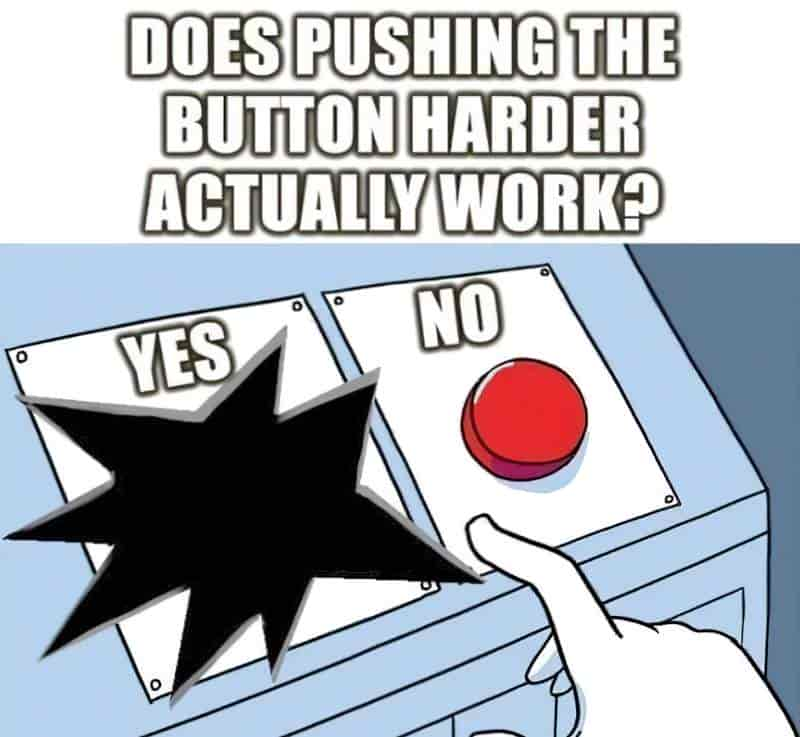
But just before they reach their goal, they decide their plan isn’t working and try something different. But if only they’d kept going with the original plan a bit longer, everything would have been different!
But I’m getting ahead of myself. Notice how it’s impossible to talk about the shortcoming of the main character(s) without also talking about the rest of the story? That’s how it should be. The shortcoming of the character/s affects how the rest of the story plays out. A character’s shortcoming affects the plans they make and how they respond to other characters.
There is also a cat. I have no good theories about that cat, except when cats appear in stories they often indicate some kind of magic is going on in the background.
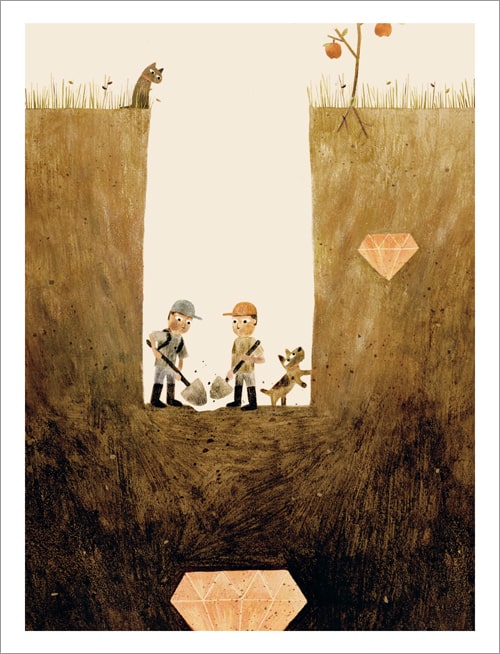
WHAT DO THEY WANT?
In picture books especially, the characters are often very clear about what they want. In this book, Dave tells Sam (and the reader) that they want to find something spectacular. That’s why they’re digging.
“We are on a mission,” said Dave. “We won’t stop digging until we find something spectacular.”
A word about the theme
Psychologists have found that people who set specific goals have more success achieving those goals than people who set general, unclear goals. For example, you’re better off saying, “I’m going to read 20 books this year” than “I am going to try and read more this year.” Sam and Dave have fallen into the trap of setting an unclear, general goal. They are looking for something but they’re not sure what it is. This book says something quite profound about goal-setting and perseverance.
(For more on persistence and perseverance in children’s books, I’ve written about that too.)
OPPONENT/MONSTER/BADDIE/ENEMY/FRENEMY
At first glance it may look like there is no opponent in this story. There is no massive monster who drops down into the hole. There is no mother calling them in for dinner just before they get what they want. Yet every story needs conflict, so every story needs an opponent.
How does this story work without one?
Sam and Dave Dig A Hole is an excellent example of why you don’t need a Big Bad Baddie to write a good story. Usually, when there’s no Big, Bad Baddie, the friends get into an argument between themselves. They argue over the best plan to take. They want the same thing (and only one can have it), or they want different things. One ends up storming off, or something like that.
But this picture book goes in the exact opposite direction. Sam and Dave never argue. They agree with each other every time. They are both tired, they both agree to go off in a different direction and they sit down and enjoy their snack. But! Their LACK of arguing is their downfall. If one of them had said, “No, let’s keep digging a little longer,” they may have had an argument, but they would also have hit upon something spectacular.
Another message in this book, apart from ‘don’t give up because you might almost be there’:
‘Sometimes disagreement can be a good thing’. When two easy-going people go on a difficult mission together, at least one of them needs to push the party forward towards the end goal, even if it means a few arguments.
Sam and Dave Dig A Hole is different from most stories, and that makes it ironic. It’s not what we expect from stories.
For more on irony, see this post.
WHAT’S THE PLAN?
Plans tend to change, even in stories where characters get what they want.
The irony here is that the characters don’t get what they want BECAUSE their plans change. Mac Barnett understands story structure at a deep level and this story is almost a parody of regular stories. (He’s making fun of other stories.)
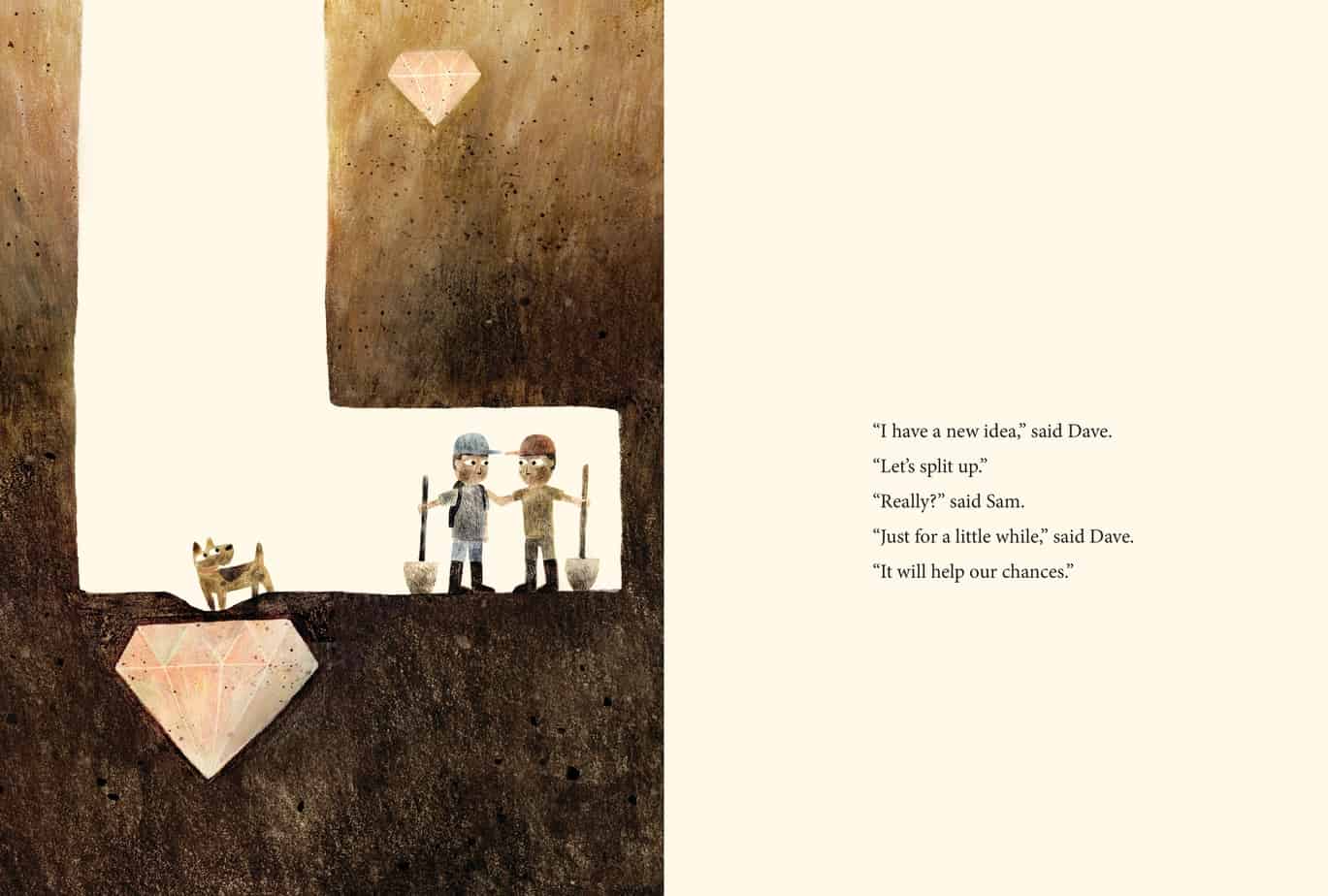
BIG STRUGGLE
In place of a Big Battle we have a strange, unexpected and confusing event. Sam and Dave are suddenly transported out of the hole.
This reminds me of picture books where a bodily function stands in for the Big Battle. Sometimes a character does a massive sneeze or a really stinky fart (Walter The Farting Dog) or something like that. Suddenly everyone forgets what they were trying to achieve and the story ends.
This is a bit like that.
WHAT DOES THE CHARACTER LEARN?
The irony of Sam and Dave Dig A Hole is that they learn nothing.
BUT!
The READER has learned something. And that’s good enough.
Let me explain.
The reader has been able to see that big diamond all along. The fancy word for that is ‘audience superior position’. It’s a form of dramatic irony. Dramatic irony is where the characters and the audience know different things. Characters can know more than we do, or they can know less. Picture book creators love to put the young reader in audience superior position. It makes little kids laugh. Also, little kids are used to being in ‘inferior position’ in their everyday lives because adults always know more than little kids know about almost everything.
What do we learn from this story? That’s connected to the themes. Keep going with your goal because you might almost be there AND sometimes friends don’t always have to agree with each other.
HOW WILL LIFE BE DIFFERENT FOR SAM AND DAVE FROM NOW ON?
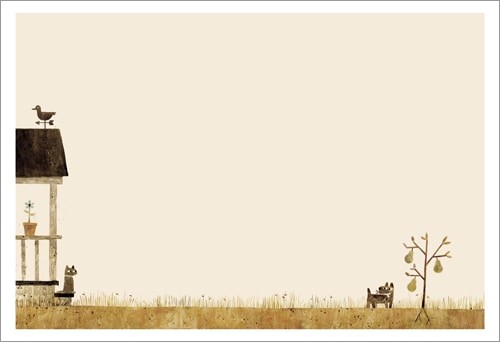
I didn’t notice this the first time I read it because I was too focused on the words and not paying close enough attention to the art, but take a really close look at the opening spread compared to the closing spread. Sam and Dave have not been transported back home. They’ve been transported into another world which looks similar to their former world, but it’s just a little bit different! Sam and Dave may have been thrown into ‘The Upside Down’ world. Think of Stranger Things. Think of Coraline. Similar trick here.
Will Sam and Dave ever work out they haven’t been transported back home? This is really freaky if you dwell on it. Their parents won’t be the same parents. Their grandfather won’t be the same grandfather.
A kid asked [Mac Barnett] if the ending was a dream, and to me at least, Mac refuted this. He said, “Look at the dog’s eyes. Always look at the eyes in Jon Klassen books. The dog never goes to sleep.” To me, while it may not completely refute the dream theory, it at least tells me that Mac doesn’t think they were dreaming.
from I’ve accepted the fact that I’m never going to find out what really happened at the end of Sam and Dave Dig A Hole from Hope Westeer
Hope also has a post about the conspiracy theories that have popped up around what happen to Sam and Dave Dig A Hole. Which is exactly why Mac and Jon are right to keep the ‘real ending’ to themselves. They’d only pop that bubble!
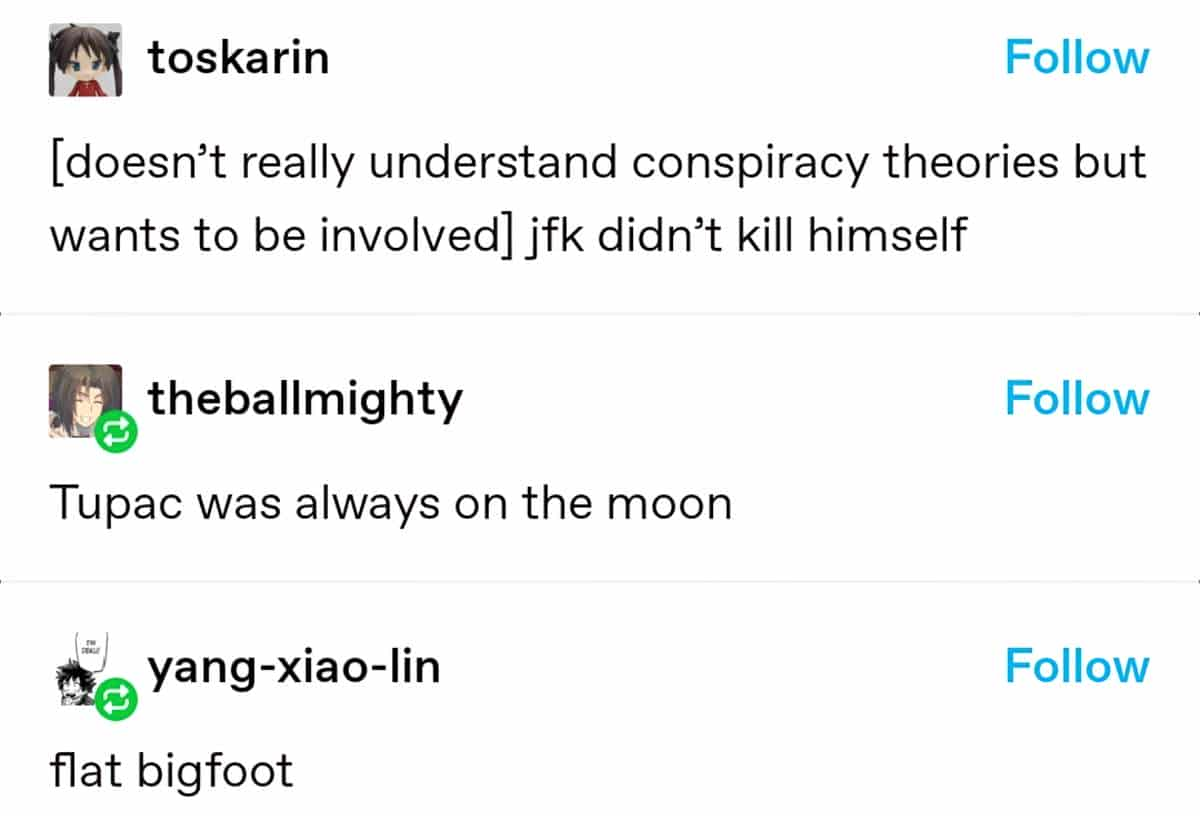
We can learn that from Mac and Jon. If you write a story you don’t have to explain yourself. You don’t have to tie up every single little thing. If you drop the right clues, clues are enough. Many readers love to speculate about what ‘really happened’, even though we’re dealing in story, so none of it ‘really’ happened at all.
However, I’d like to add my own little conspiracy theory.
Which is not really a conspiracy theory at all. Whatever happened at the end there, the fact that Sam and Dave’s WORLD is different means that SAM AND DAVE are different. They appear to have learned nothing, but really they have. When we as people change, our world seems to change, even if the world around is remains exactly the same. The change in Sam and Dave’s psychology is symbolised by the changes in their world.
In other words, this story would not have felt complete UNLESS Mac and Jon did something dickey at the end like that. Something has to change over the course of any story.
That is a rule of storytelling that you just can’t break, but you may break it in unexpected ways.
OTHER BOOKS FEATURING ‘HOLES’
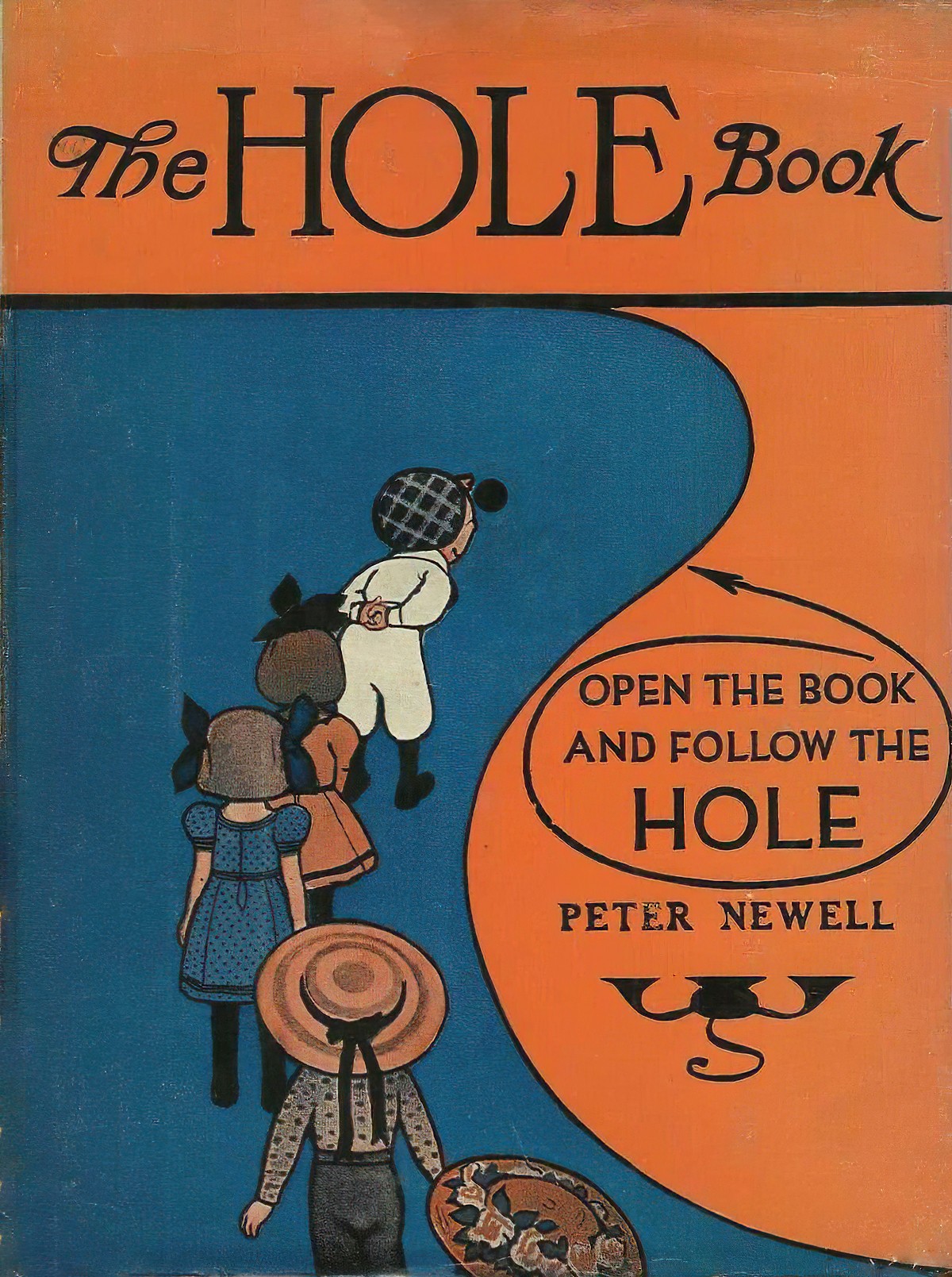
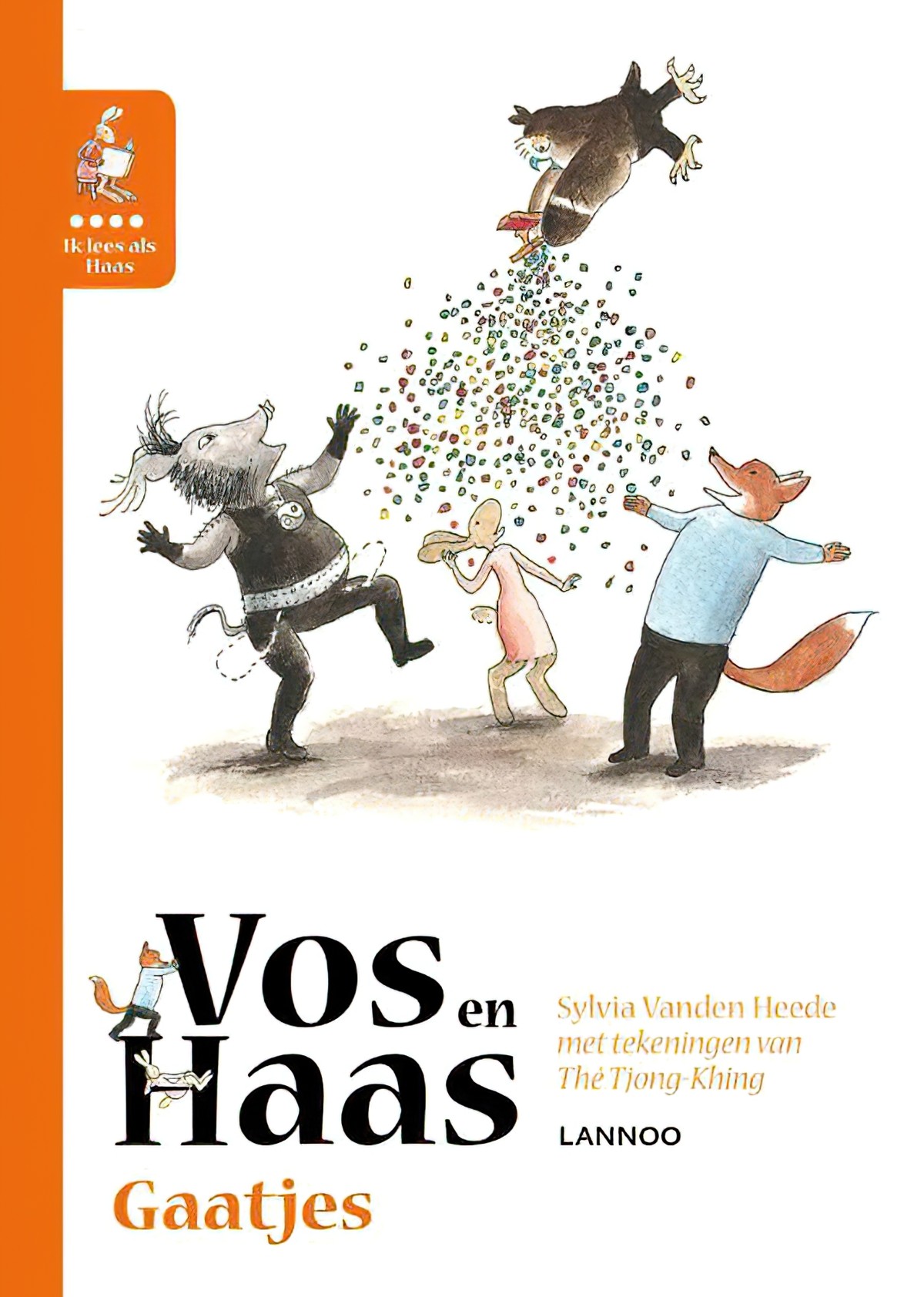
One character wants holes in their ears but the other misunderstands, saying that they already have holes in their ears, that’s how we can hear! But the other character is talking about piercings.
Owl happens to have a machine for making holes.
This sounds like the beginning of a horror story, doesn’t it?
But it’s for beginner readers.
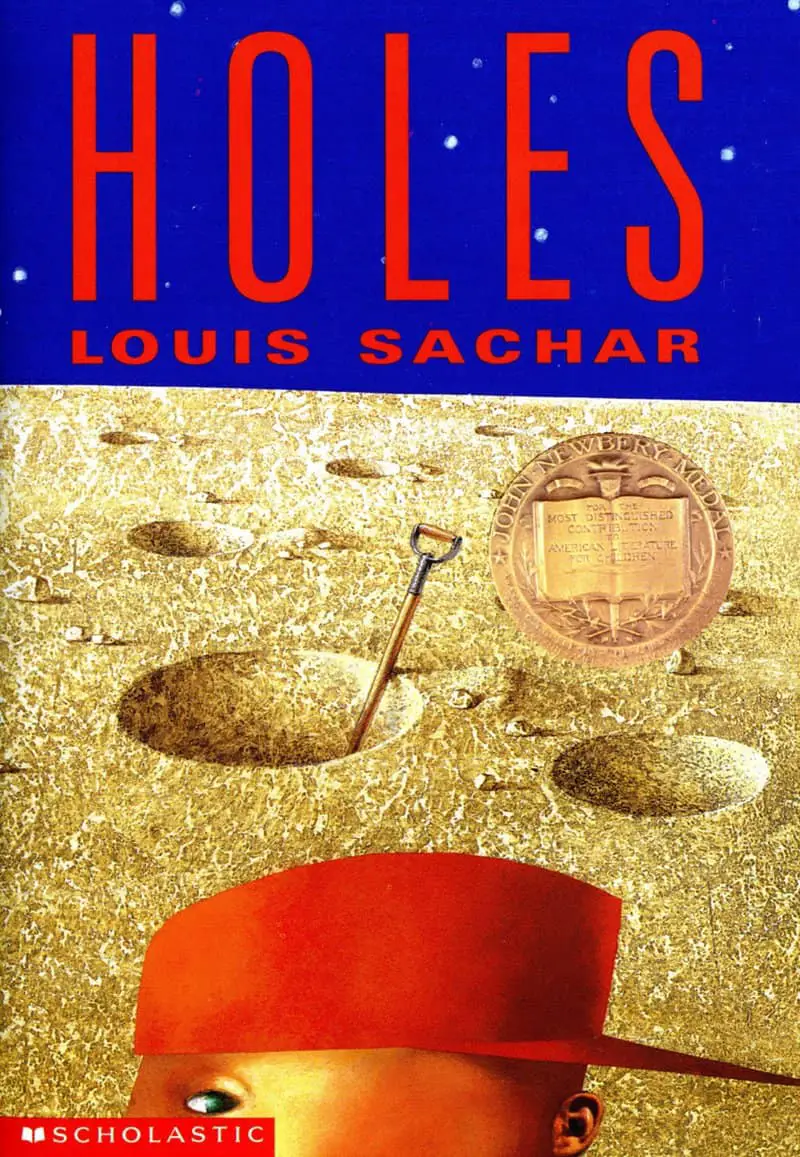
Stanley Yelnats is under a curse. A curse that began with his no-good-dirty-rotten-pig-stealing-great-great-grandfather and has since followed generations of Yelnats. Now Stanley has been unjustly sent to a boys’ detention centre, Camp Green Lake, where the boys build character by spending all day, every day digging holes exactly five feet wide and five feet deep. There is no lake at Camp Green Lake. But there are an awful lot of holes.
I have tried to read this several times so I can write about it here, but can’t get past the misogyny. Stanley has been sent to a particularly misogynistic camp.
Yes, yes, I realise we’re supposed to critique that. But it’s no fun to read, and I can’t trust that all readers will critique it. Instead, the misogyny reads as ‘funny’.
